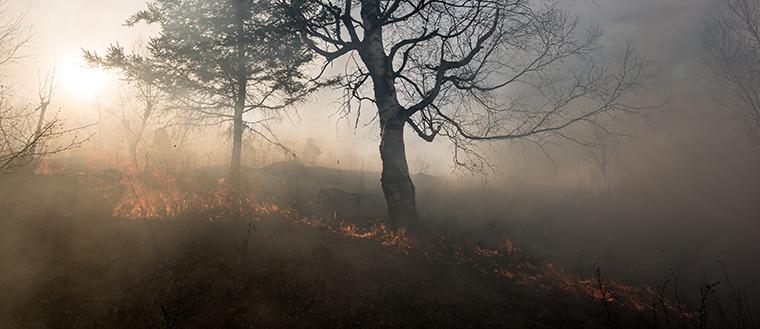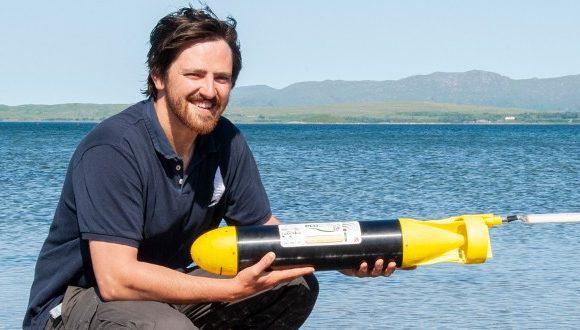Earth Under Fire: What is Causing Climate Change?

By Naomi Kent
The terms “climate change” and “global warming” are frequently used interchangeably, although they are two different things. Climate change refers to the increasing average global temperature caused by naturally occurring processes such as solar radiation, forest fires, and volcanic eruptions. Global warming, on the other hand, refers to a long-standing trend of rising global temperature due to human activity.
Since the concept of global warming was introduced in the mid-1970s, the triggers for climate change, as defined in scientific studies, have been expanded to include the human element. Deforestation, population escalation, and the use of fossil fuels are now widely believed to have a significant influence on the Earth’s changing temperatures and weather patterns. This has led scientists to further study their effects on climate.
The consensus among the scientific community is that the greenhouse effect has been the leading cause of climate change. The greenhouse effect refers to gases being trapped within the Earth’s atmosphere, thereby increasing the global temperature. Gases trapped in the Earth’s atmosphere can be divided into two categories: long-lasting greenhouse gases and feedbacks.
Long-Lasting Greenhouse Gases
Long-lasting greenhouse gases are always present in the environment to a certain extent, and neither their physical forms nor chemical properties are affected by varying temperatures. This means that greenhouse gases cause changes to the Earth’s atmosphere, and consequently to the environment, regardless of what the temperature is. Examples of long-lasting greenhouse gases include:
Nitrous oxide (N2O): A greenhouse gas emitted from a variety of natural sources, it is also released through human practices such as use of fertilizers, burning of fossil fuels and the production of nitric acid. Nitrous oxide makes up approximately 5 percent of the greenhouse gases in North America, and according to the US Environmental Protection Agency (EPA), approximately 40 percent of the nitrous oxide present in the Earth’s atmosphere comes from human activities alone.
Carbon dioxide (CO2): A small concentration of the atmospheric air consists of carbon dioxide, only 0.039 percent. Carbon dioxide is mainly produced through respiration, and since all living things respire, it is always present in the environment. Carbon dioxide is also naturally released through volcanic eruptions and natural organic decomposition. However, since the Industrial Revolution, carbon dioxide concentrations have been increasing rapidly with associated fossil fuel emissions. The common practice of burning coal and oil to produce fuel for vehicles and industrial machinery has provided a suitable environment for carbon molecules to combine with oxygen molecules, which in turn produce carbon dioxide. This increase in carbon dioxide is believed to be responsible for climate change that has occurred over the last 100 years.
Methane (CH4): Methane is a short-chain hydrocarbon, which is produced mainly through the breakdown of large-chain hydrocarbons. This includes such processes as rice cultivation, agriculture and decomposition of domestic and industrial waste. While methane has a greater effect on climate change than carbon dioxide, its concentration in the environment is far less. However, with factories cutting costs by not properly processing their chemical waste, the concentrations of methane in the environment are increasing.
Chlorofluorocarbons (CFCs): CFCs are artificial compounds, and their use in numerous applications has had a detrimental effect on the Earth’s ozone layer in the last half century. This loss of ozone has contributed to climate change. As awareness for the greenhouse effect and ozone destruction increases, the use of CFCs is being restricted. While some scientists say this will reduce damage to the environment, others say the effort is too little, too late.
Feedbacks
Both the physical forms and chemical properties of the gases referred to as “feedbacks” are affected when the temperature varies. Thus, changes in these gases are often cited as proof of climate change.
Water vapor (H2O) is an example of a feedback gas. As a result of the Earth’s natural water cycle, presence of water vapor in the atmosphere is normal. At higher temperatures, there is more water vapor in the atmosphere, amplifying the effect of other greenhouse gases. According to Eric Fetzer, an atmospheric scientist for NASA, “Water vapor is the big player in the atmosphere as far as climate is concerned,” and it will have a significant impact on the Earth’s climate by the end of the century.
How is the extent of climate change known?
Advanced Technology: Within the past century, technology has advanced at an extraordinary rate. Satellites orbiting the Earth do more than just give us digital TV and allow us to call the other side of the world, they collect massive amounts of data on temperature changes and weather patterns, and transmit this data back to Earth for analysis. Comparing information recorded over a number of years and analyzing statistics has allowed scientists to gauge the extent of the problem and make predictions with respect to climate change.
Carbon Dioxide Levels in the Atmosphere: One way s of calculating the extent of climate change is by measuring atmospheric carbon dioxide levels. Measured in units called “parts per million,” for over 6,500 centuries these levels never exceeded 300 parts per million. Yet in the last 65 years alone, the levels have increased by 100 ppm; the 2015 carbon dioxide levels have been recorded at 400 ppm, and they continue to increase. Coupled with the rate of deforestation and lack of new trees being planted, and if current practices are not altered, increased carbon dioxide levels can have a serious impact on the Earth’s atmosphere and climate.
Increase in Global Temperature: Trapped gases like carbon dioxide have been proven through experiments in the late 19th century to cause a rise in temperature. Carbon dioxide in the Earth’s atmosphere acts as a trapped gas, leading to increased global temperature. According to the Intergovernmental Panel on Climate Change (IPCC), over the last 50 years, the rate of warming has nearly doubled what it was over the last 100 years in the Earth’s atmosphere.
According to NASA’s global temperature records, which are updated monthly, temperatures have been on a continuous climb since the late 1970s; the 10 warmest years in the last century have occurred since 2000. Increasing temperatures cause glaciers to melt and sea levels to rise. In the past decade, sea levels have risen by approximately 14 inches, which is twice as much as they rose in the past century.
How important is it to take measures to deal with climate change?
In 2013, the American Geophysical Union stated that “Human-induced climate change requires urgent action. Humanity is the major influence on the global climate change observed over the past 50 years. Rapid societal responses can significantly lessen negative outcomes.”
Taking steps to deal with climate change now, instead of leaving the problem for future generations to fix, involves using energy efficiently, trimming waste, and imposing consequences on polluters. As data flows in, more people become informed and get involved. Research has shown that minor changes can have a major impact on the changing climate. Everyone doing their part, even in a small role, can ultimately turn things around.















